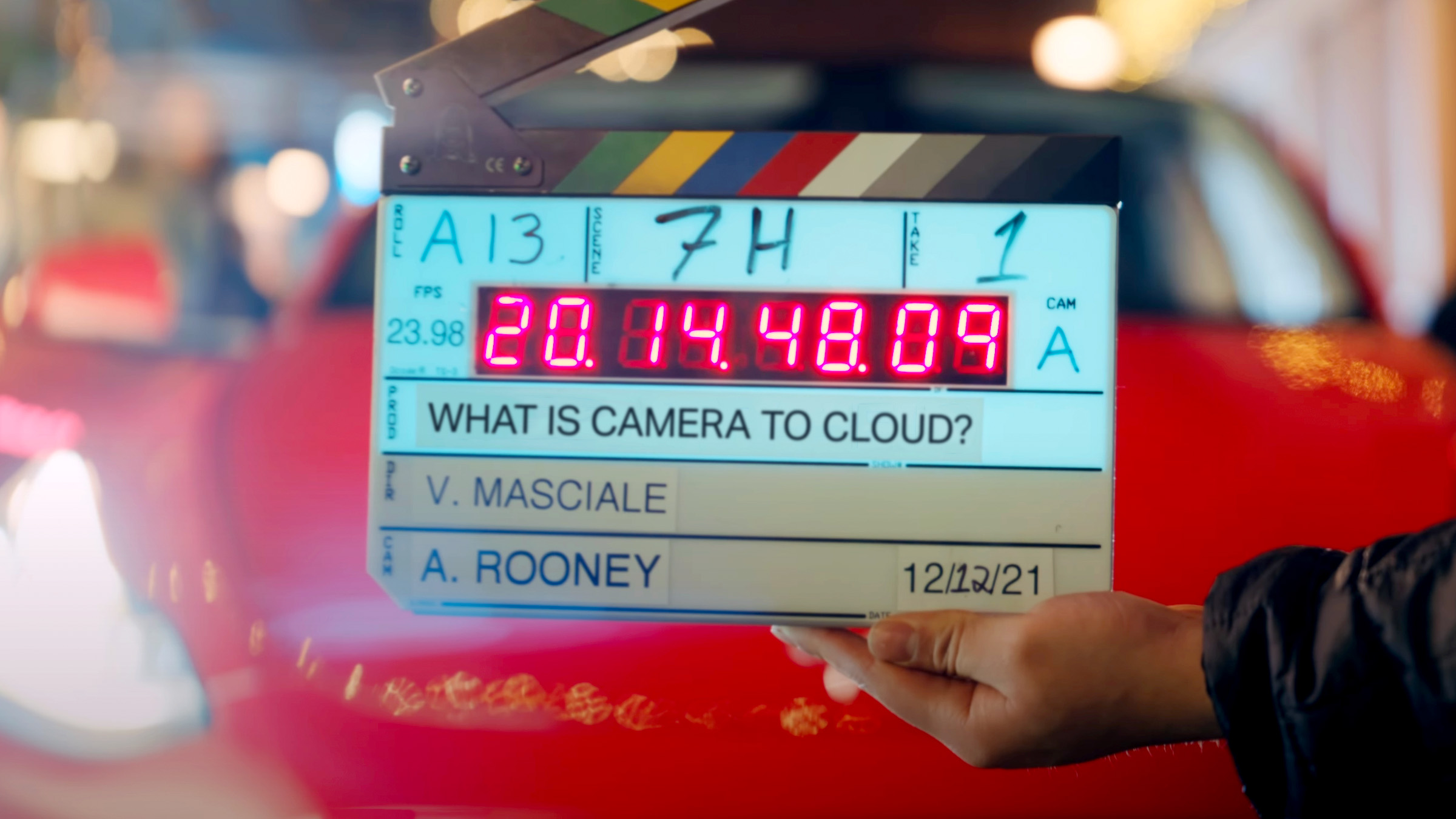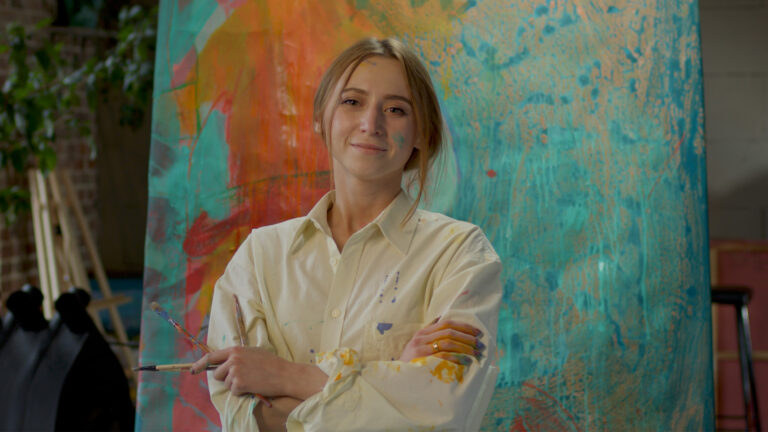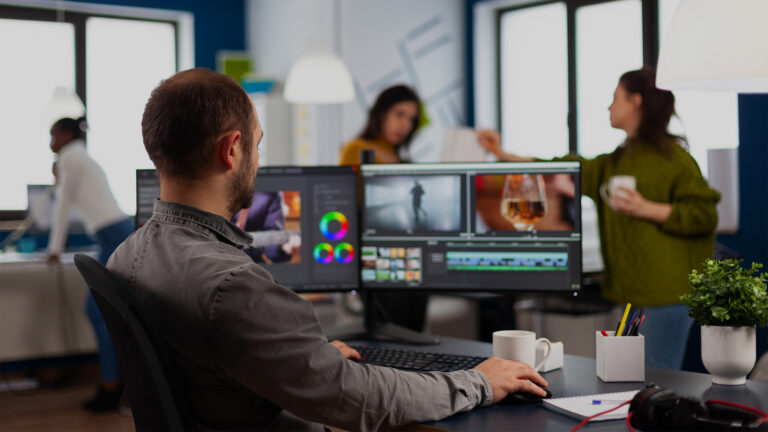In this webinar, our very own instructional media content producer Shawn McDaniel takes a deep dive into Frame.io Camera to Cloud (C2C) with the help of innovation technology manager Rob Loughlin and lead editor Sarah Katz.
By the end of this educational, entertaining, and comprehensive session, you’ll be set up with everything you need to get started with C2C, including connecting and managing your devices, on-set networking, and editing workflows while your team is still in production. So let’s dive in!
The value of Frame.io
If you’re already familiar with Frame.io, you can skip ahead. But if you need a little overview, Shawn provides this at the 8:15 mark, explaining how Frame.io allows teams to share files and work together on creative projects across any distance.
He also explains how Frame.io works on practically any device you need it to, with a robust collection of web- or device-specific apps that covers Mac and PC, phones and tablets—even the new AppleTV.
What is Camera to Cloud?
At 10:31, Shawn introduces Rob Loughlin to provide an overview of Frame.io Camera to Cloud (C2C). As he describes it, “Camera to Cloud is an ecosystem of integrations that enable workflow.”
In other words, if you want to get your media files from the camera to anywhere else in the world, Camera to Cloud can do that for you in a number of ways. For example, you might be shooting photos with a Fujfilm X-H2S or video with a RED V-Raptor or Komodo, which can all transmit media directly from the camera directly to a Frame.io Project.
Alternatively, if you’re shooting with a camera with an HDMI or SDI output, you can connect to a Teradek or Atomos device to achieve the same goal. Shooting on a cellphone? FiLMiC Pro will get you there.
Frame.io already has several technology partners providing secure connectivity between all kinds of production hardware and software, and the list is growing all the time—particularly since the announcement of our Camera to Cloud certification program. Some of which Rob details between 13:04 and 18:47, along with a detailed overview of how they work—including our new image workflow.
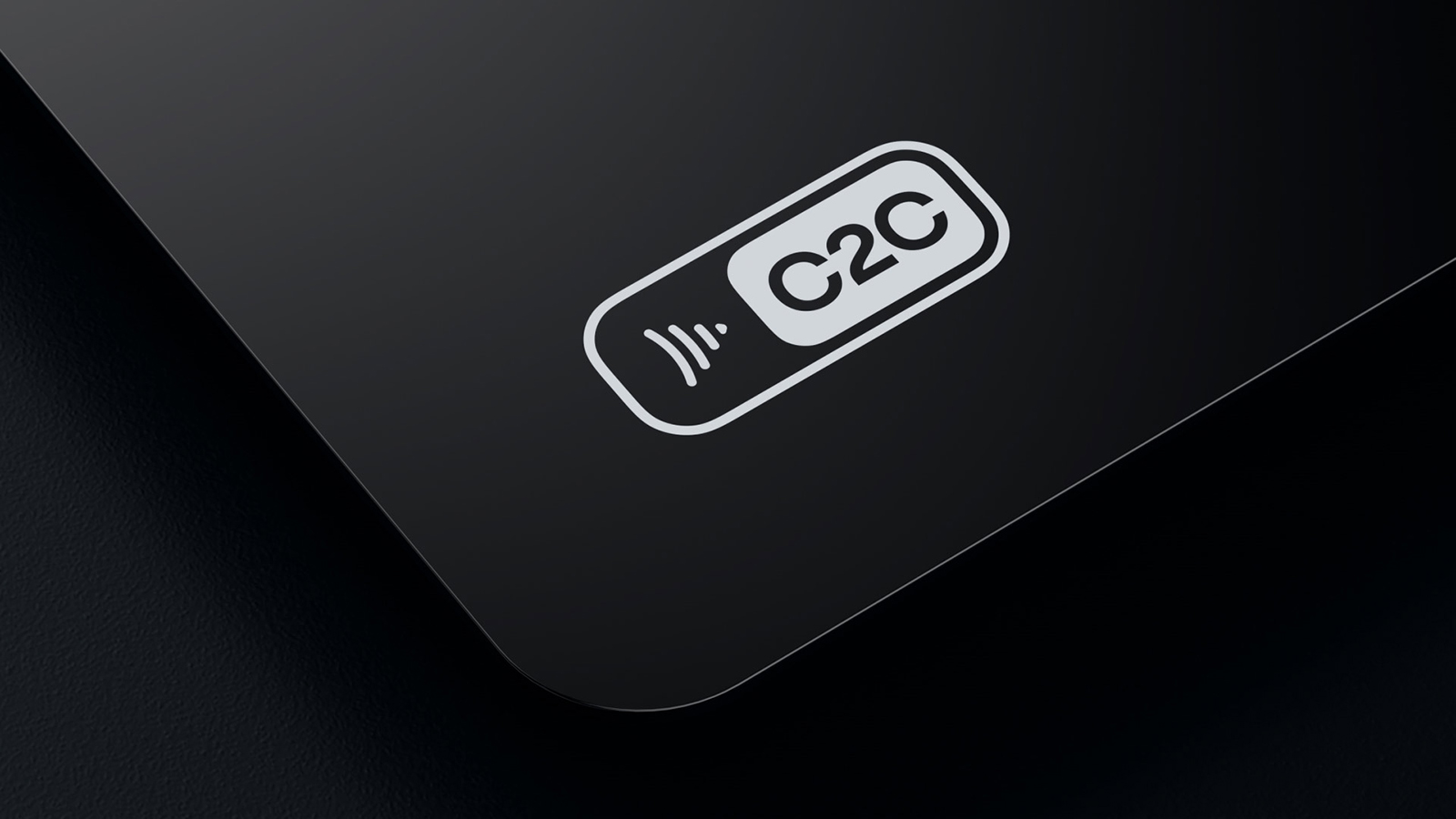
So whatever files you’re creating and whatever device they’re being created by, C2C can transport them from their point of origin to anyone, anywhere.
Demo time
Of course, no Frame.io webinar would be complete without a live demo, which Shawn kicks off at 18:58. And if you haven’t seen one of these before, they’re a great example of how Frame.io C2C works. No smoke, no mirrors. Just files being captured and shared in seconds, and delivered for review to the entire audience in real time.
(There are also some great questions coming in from the audience around audio devices and capture during this segment that Shawn and Rob respond to.)
Post-production NLE integration
Now that we’ve shown how quickly you can get your media files from origin to anywhere, what comes next? In most cases, this stage is likely to be post-production—probably editing, possibly color—so Shawn brings in our fabulous lead editor Sarah Katz at the 30:16 mark.
She explains the death of the portable drive and the other evolutions she’s seen during recent years, before covering the many ways that Frame.io integrates with NLEs—in particular how it integrates so well, you can collaborate with your team without ever leaving your editing application. And if you’re interested in the post-production process, you can see more detail when Sarah demonstrates it from inside Premiere Pro from 33:25 onwards.
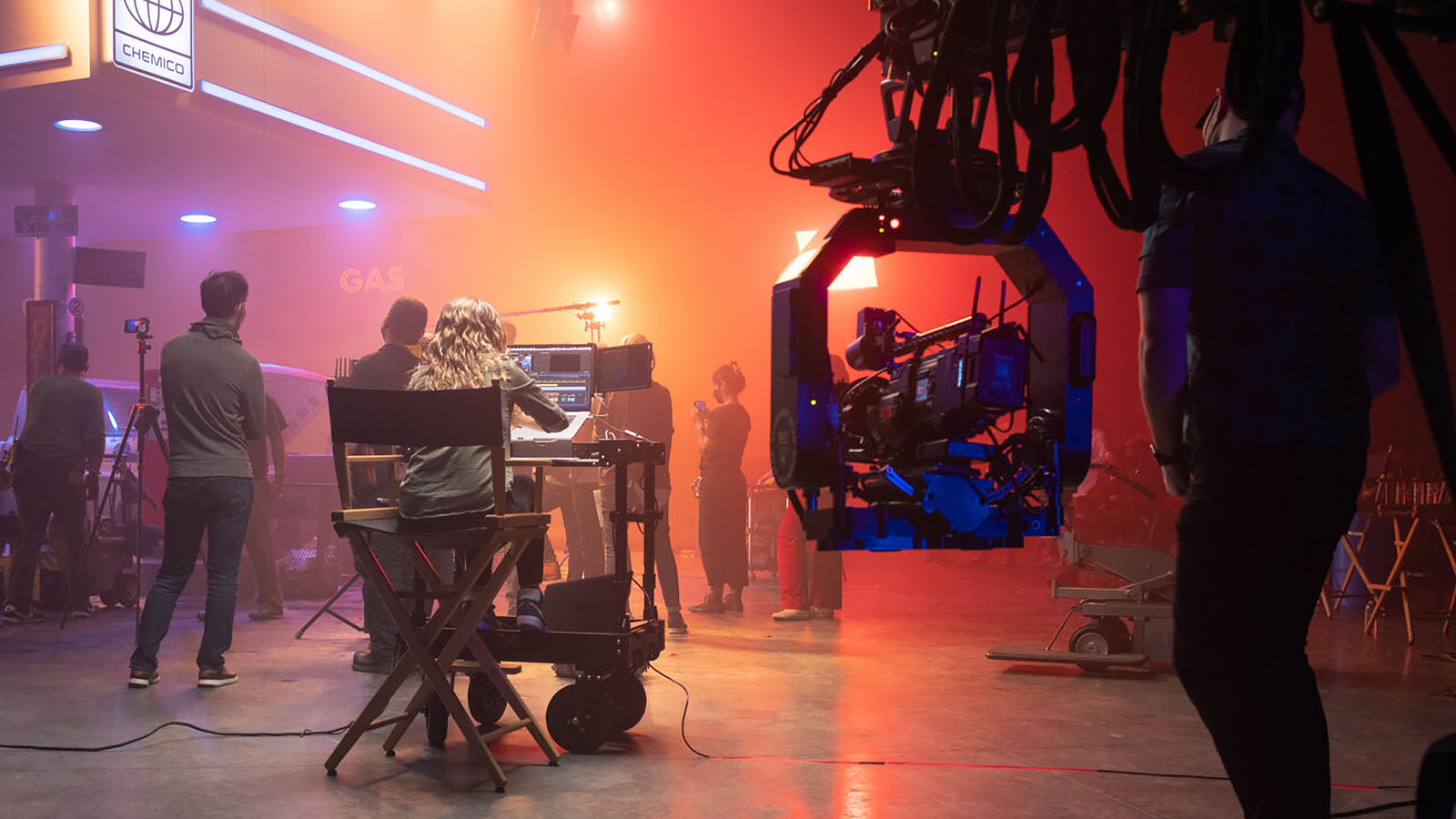
She brings in the files that were shot during Shawn and Rob’s live demo earlier, and runs through her proxy/OCF workflow. A sharp-eyed viewer poses a question regarding OCFs and proxies, which Rob is drafted in to answer, and this leads to an impromptu Q&A session at 41:46 onwards. And with that done, we’re back to Shawn and Rob to explain how things connect on set.
Set networking
If you’re looking for details on how to connect your devices on set, you’ll want to join in at the 47:32 mark. As Rob explains, it doesn’t take a lot to get your camera connected to the web. The devices used don’t require a specific type of network connection, so you can supply internet connectivity via wifi using mobile modems, static satellite, or even LTE/5G hubs.
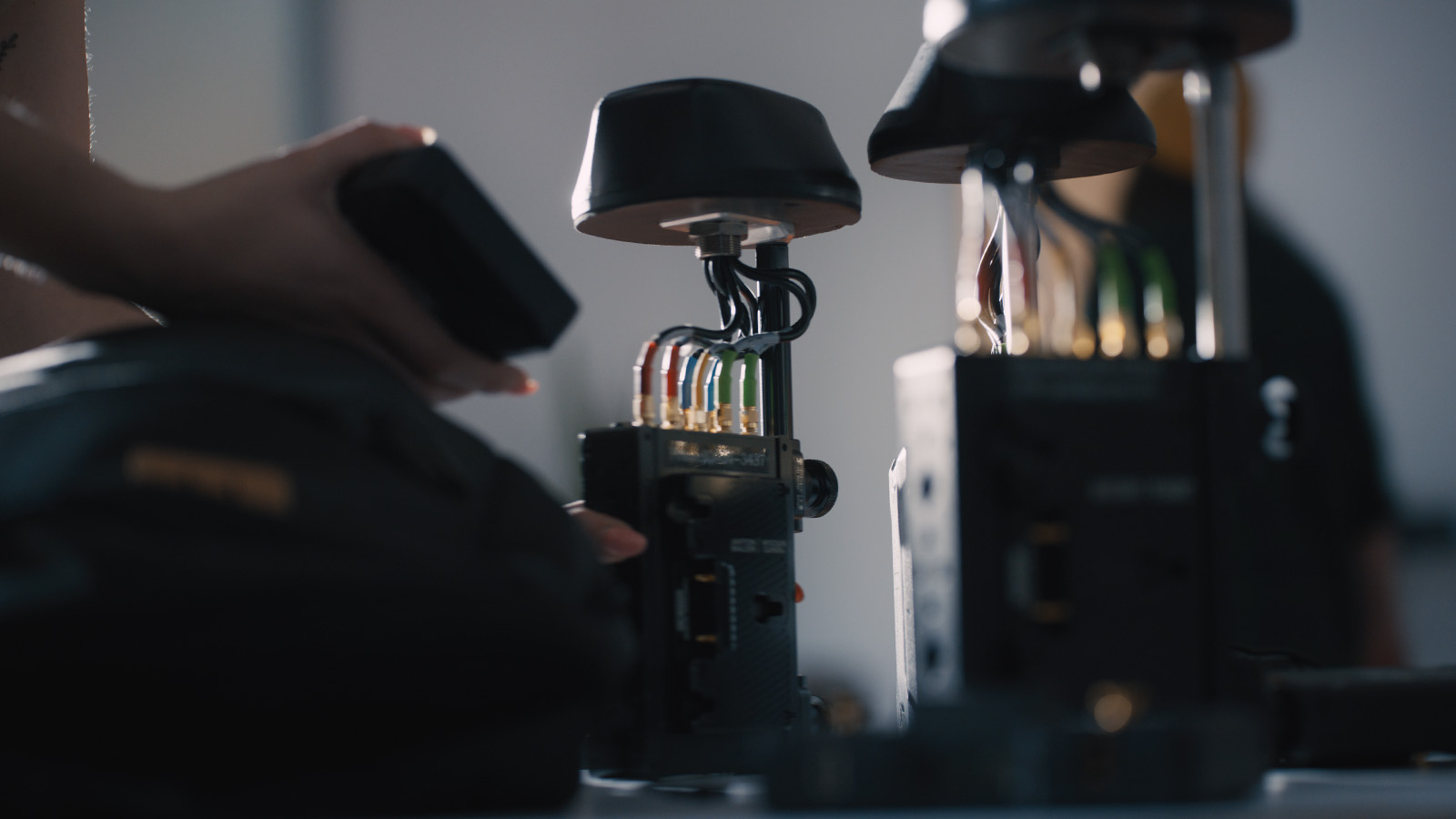
And to wrap up, the full Q&A session starts at 53:15, with questions about wireless video transmission, the maximum number of cameras/devices that you can connect to a Frame.io project, and live comments within the NLE, among others.
So all that remains is to thank Shawn, Sarah, and Rob for hosting such a great demo and taking the time to field so many questions from the audience. We’re hoping to make Frame.io webinars a more regular thing, so if you have a topic that you’d like us to feature in the future, drop us a note below!

